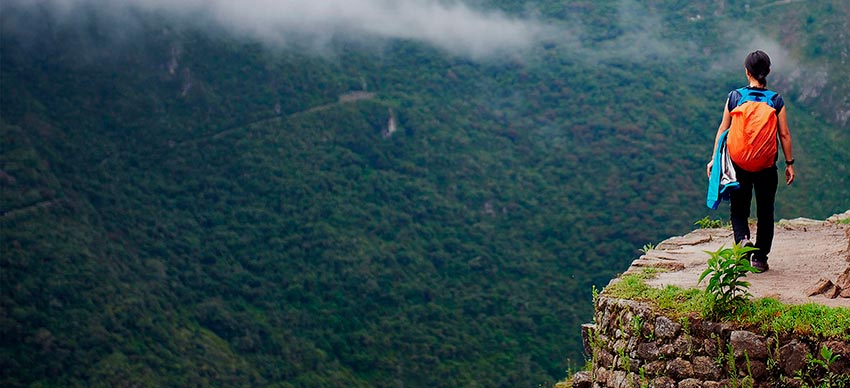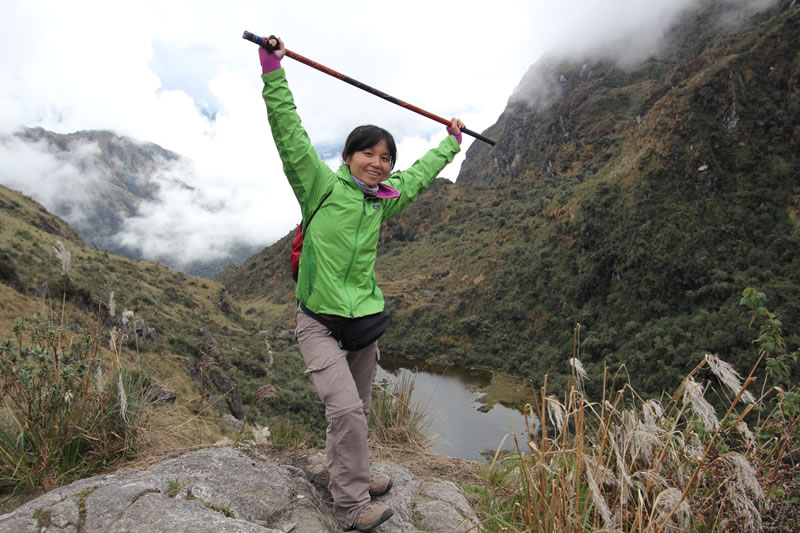
The Inca Trail is not a dangerous destination if all the appropriate recommendations are taken into account: follow the established signs, obey the tourist guide’s suggestions, avoid drugs or alcoholic beverages and stay away from nearby areas of cliffs or with risk of landslides. . The cases of accidents during this hiking route to Machu Picchu are very rare.
It is dangerous?
- The Inca Trail is not dangerous. Each year approximately 67,400 tourists travel this hiking route . Accident cases are for only a few people. Most are due to some stumbling block. The cases of deaths are almost nil.
- Landslides are perhaps the most dangerous threat on the Inca Trail. Throughout the Andes Mountains, especially in the rainy season, rocks can fall from high mountains. The most intense rains in Cusco occur in January, February and March.
- Otherwise, the Inca Trail is a very safe route. The authorities of the Ministry of Culture of Peru have established camps in areas away from cliffs and rocky mountains. In addition, the tour guides have first aid training.
- Finally, along the Inca Trail there are signs and tips to minimize the few risks that there are on the route. You can travel safely!
Are there landslides?
- Landslides can occur on the Inca Trail during the rainy season, especially in January, February, and March.
- February, the rainiest month of the year, is also the most dangerous due to falling rocks and landslides. For this reason, the authorities of the Ministry of Culture established the closure of the Inca Trail during those days.
- Along the Inca Trail there are camps equipped to spend the night in total safety: Huayllabamba (day 1), Pacaymayu (day 2) and Wiñayhuayna (day 3). All camps are located away from landslide areas .
Are there wild animals?
- The Inca Trail offers a diverse fauna throughout the four days of the route . Among the most representative animals are: the spectacled bear, the Andean deer, the cock of the rocks, the duck of the torrents, the Andean puma and more.
- Of all the wild animals that circulate on the Inca Trail, perhaps the most dangerous is the spectacled bear . Likewise, this animal is the least aggressive of its species. If you meet one, just walk away and take photos at a safe distance. On the contrary, the human is a real threat to the spectacled bear.
- Snakes, such as the Andean mattress, can also pose a danger to visitors. These animals are not usually on the roads. Likewise, if you run into one, the safest thing is to continue the route without disturbing them.
Is altitude sickness dangerous?
- The Inca Trail crosses trails that vary from a maximum of 4,200 meters above sea level (in the sector called Abra Warmiwañusca) to a minimum of 2,040 meters above sea level (in the town of Aguas Calientes).
- In the first two days of hiking, you will go through high Andean landscapes that can cause the famous ‘altitude sickness’, also called ‘mountain sickness’ or simply ‘soroche’ . This natural physical discomfort is produced by the body’s maladjustment to mountainous geographies where there is low oxygen pressure.
- Altitude sickness can cause headaches, nausea, fatigue, and excessive agitation when exercising. Older adults or people with heart problems may be at risk when hiking the Inca Trail.
- Altitude sickness is common to all visitors who come to Cusco. To reduce the symptoms, it is simply recommended to spend one or two days in the city of Cusco before the Inca Trail. Thus the body better adapts to the new Andean geography.
- It is also important to avoid alcoholic beverages and fatty foods.

Tourist on the Inca trail
Are the guides prepared for emergencies?
- The tour guides who accompany visitors during the Inca Trail are trained in first aid . They must register and go through an evaluation. Only then will they be suitable for the hiking route.
- The guides are in charge of the well-being of each of the tourists that make up their group during the walk. These have a first aid kit as well as bottled oxygen in case the visitor needs it.
- If the group of tourists in charge of the guide exceeds 8 people, the guide will have an assistant who will also have the responsibility of protecting the group.
- Tourists are recommended to follow all the recommendations provided by the guide. For example, it is not advisable to drink alcoholic beverages or use drugs during camping nights.
Are there health posts nearby?
- Unfortunately, because the Inca Trail is isolated with the Andean cities or towns, there are no health posts near the route.
- In case of emergencies, the closest health posts are in the town of Aguas Calientes or in the town of Ollantaytambo . Depending on the location of the tourist, they will be evacuated to one of these two towns.
- The transfer is done by train. In case of a high risk emergency, we proceed to carry out the evacuation by helicopter to the city of Cusco.
How to do a 100% safe walk?
- To carry out the Inca Trail safely, prevention is very important. Thus, the tourist must obey the recommendations of his tour guide, avoid drugs or alcoholic beverages and follow the marked paths.
- The walk is recommended for people over 8 years old and older adults in good health. If you suffer from heart problems, it is not recommended to do the Inca Trail .
- The SERNANP (National Service of Natural Protected Areas by the State), is in charge of maintaining the Inca Trail annually, from the starting point to the road that leads to Machu Picchu. Along the way there are park rangers who ensure the safety of the people who walk along these historic trails.
- In general, the route is 100% safe if the advice indicated is followed. The safest time to do the trek is during the dry season (April to November) . The remaining months the rains are more frequent, so certain precautions should be taken for a safer visit. In February the route is closed to the public.
By Inca Trail Machu Picchu - Last updated, 22-08-2024
Interested in the Inca Trail? Know more about Information Inca Trail!
- Inca Trail hike as a therapy to heal body and soul
- What is it like to camp overnight on the Inca Trail?
- Online availability Inca Trail to Machu Picchu 2025
- Sustainability tips for the Inca Trail
- How to get to Ollantaytambo?
- Physical preparation for the Inca Trail
